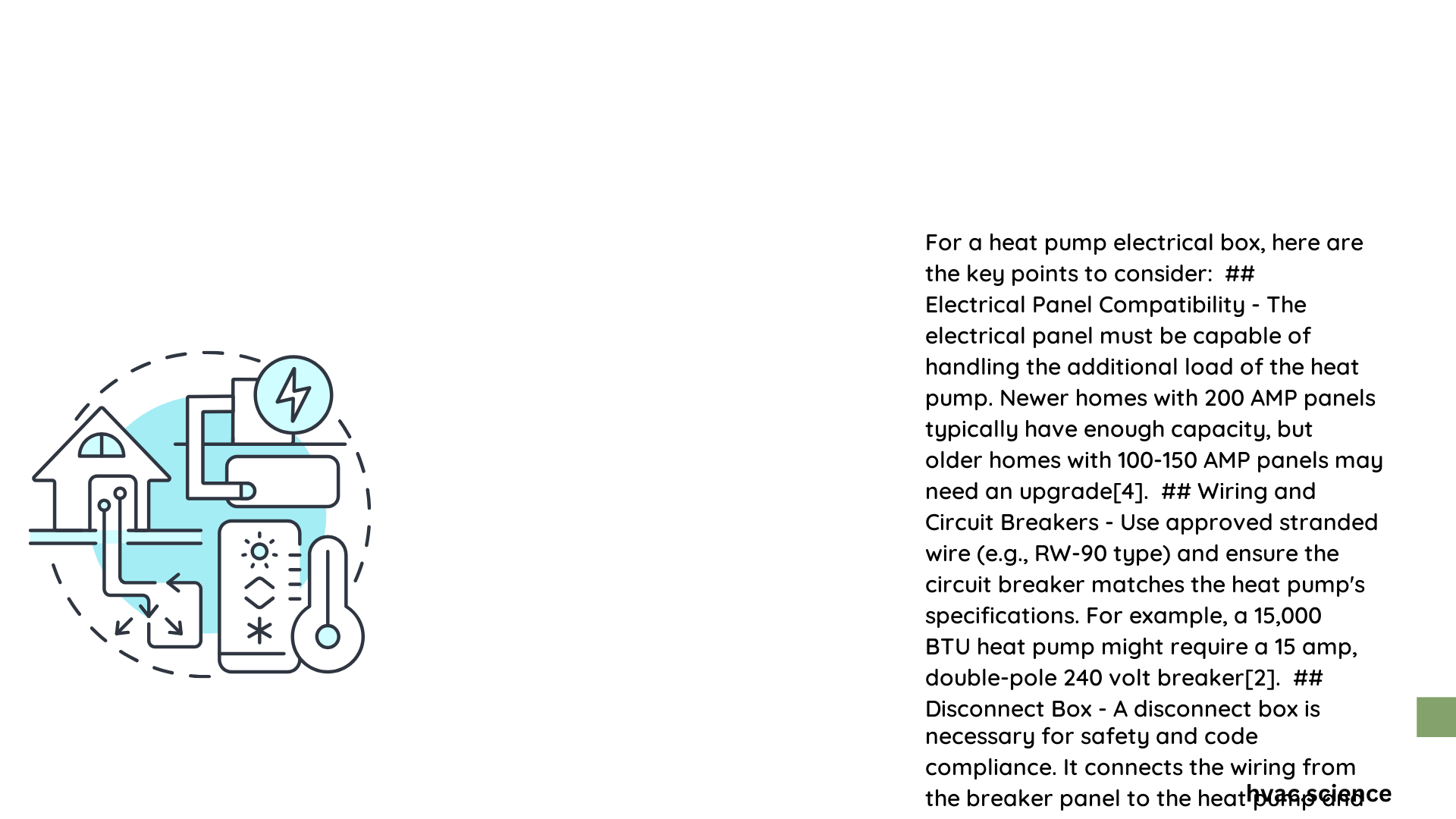A heat pump electrical box is a critical component ensuring safe electrical connection and power distribution for heat pump systems. This specialized electrical disconnect box provides a dedicated interface between the heat pump unit and your home’s electrical infrastructure, managing power requirements, circuit protection, and compliance with national electrical standards. Proper installation and understanding of technical specifications are crucial for optimal performance and safety.
What Are the Essential Clearance Requirements for Heat Pump Electrical Box?
The National Electrical Code (NEC) mandates specific dimensional guidelines for heat pump electrical box installation:
| Dimension | Requirement | Purpose |
|---|---|---|
| Width | 30 inches | Ensures safe working space |
| Depth | 36 inches | Provides front access clearance |
| Height | 6.5 feet | Allows vertical accessibility |
Why Precise Measurements Matter?
Accurate measurements prevent potential hazards and ensure:
– Unobstructed maintenance access
– Proper ventilation
– Compliance with safety regulations
How to Select Appropriate Wiring for Heat Pump Electrical Box?

Selecting correct wiring involves multiple considerations:
Wire Gauge Determination
- Evaluate minimum circuit ampacity (MCA)
- Consider wire run length
- Typical recommendations:
- 40A circuit: 8 AWG wire
- Shorter runs: Potentially smaller gauge
- Longer runs: Potentially larger gauge
Standard Color Coding
- Black/Red: Hot wires
- White: Neutral wire
- Green/Bare Copper: Ground wire
What Tools Are Required for Heat Pump Electrical Box Installation?
Essential installation toolkit includes:
– Wire strippers
– Voltage tester
– Screwdrivers
– Electrical connectors
– Wire cutters
– Drill
– Pliers
What Are the Step-by-Step Installation Procedures?
Preparation Phase
- Review heat pump electrical specifications
- Obtain necessary permits
- Verify local electrical codes
- Gather required tools and materials
Installation Steps
- Mount disconnect box with specified clearances
- Run appropriate gauge wiring
- Secure electrical connections
- Test circuit integrity
- Schedule professional inspection
What Safety Precautions Should Be Considered?
Critical safety recommendations:
– Always disconnect power before working
– Use personal protective equipment
– Follow manufacturer’s guidelines
– Obtain professional certification
– Ensure proper grounding
– Use GFCI protection for outdoor installations
What Are Common Challenges During Installation?
Potential installation complexities include:
– Incorrect wire sizing
– Inadequate clearance
– Improper connection techniques
– Lack of understanding electrical codes
What Maintenance Practices Enhance Electrical Box Longevity?
Recommended maintenance:
– Annual visual inspections
– Check for loose connections
– Verify wire integrity
– Clean surrounding area
– Monitor for corrosion signs
Technical Specifications Checklist
- Voltage Rating: Typically 240V
- Amperage Range: 30-60 Amps
- NEMA Enclosure Type: Type 3R (outdoor rated)
- Material: Galvanized steel or aluminum
Professional Recommendations
While DIY installation is possible, professional electricians recommend:
– Comprehensive code compliance verification
– Advanced diagnostic testing
– Precise calibration
– Warranty preservation
References:
– National Electrical Code (NEC)
– HVAC Installation Guidelines
– Electrical Safety Foundation International
